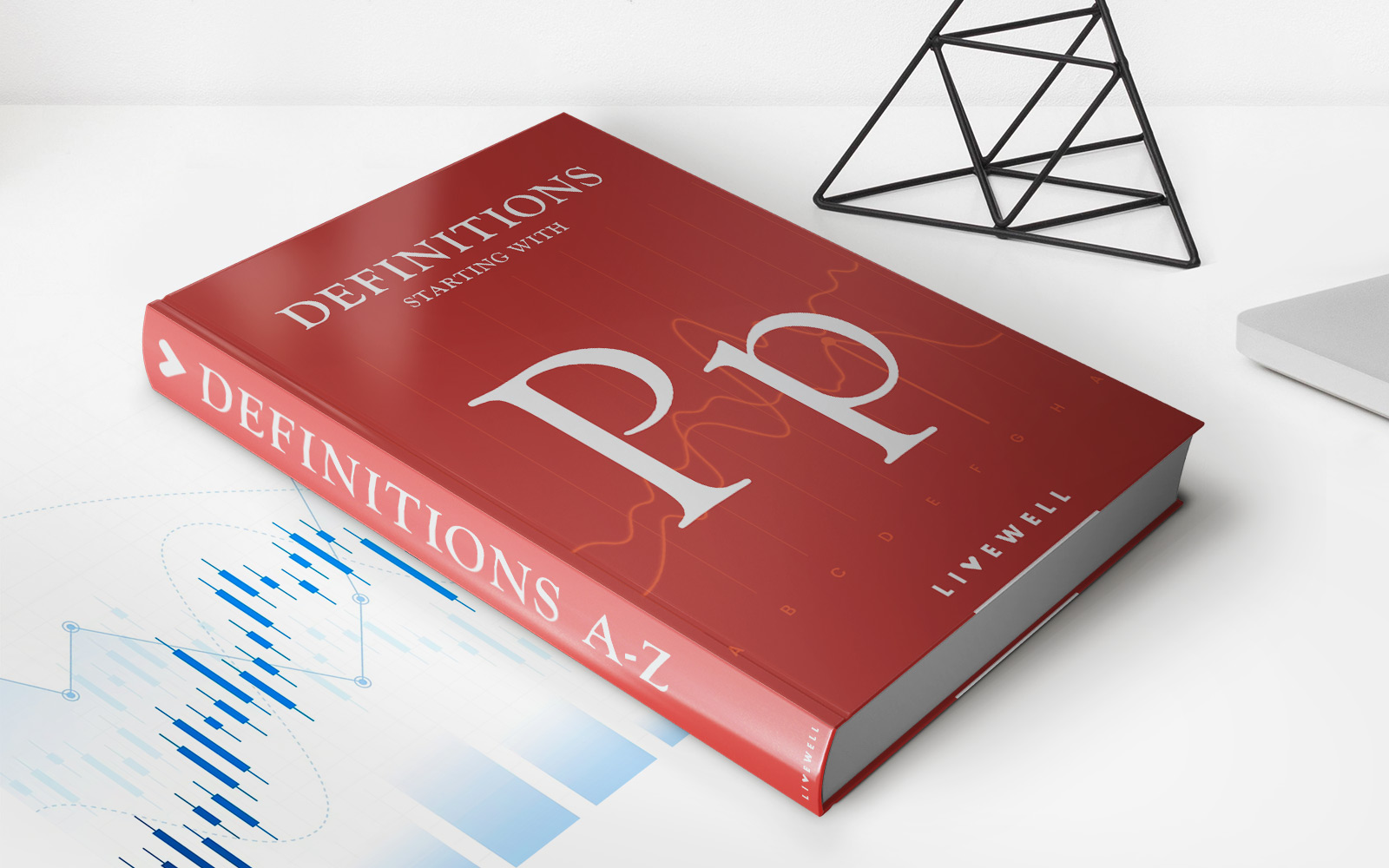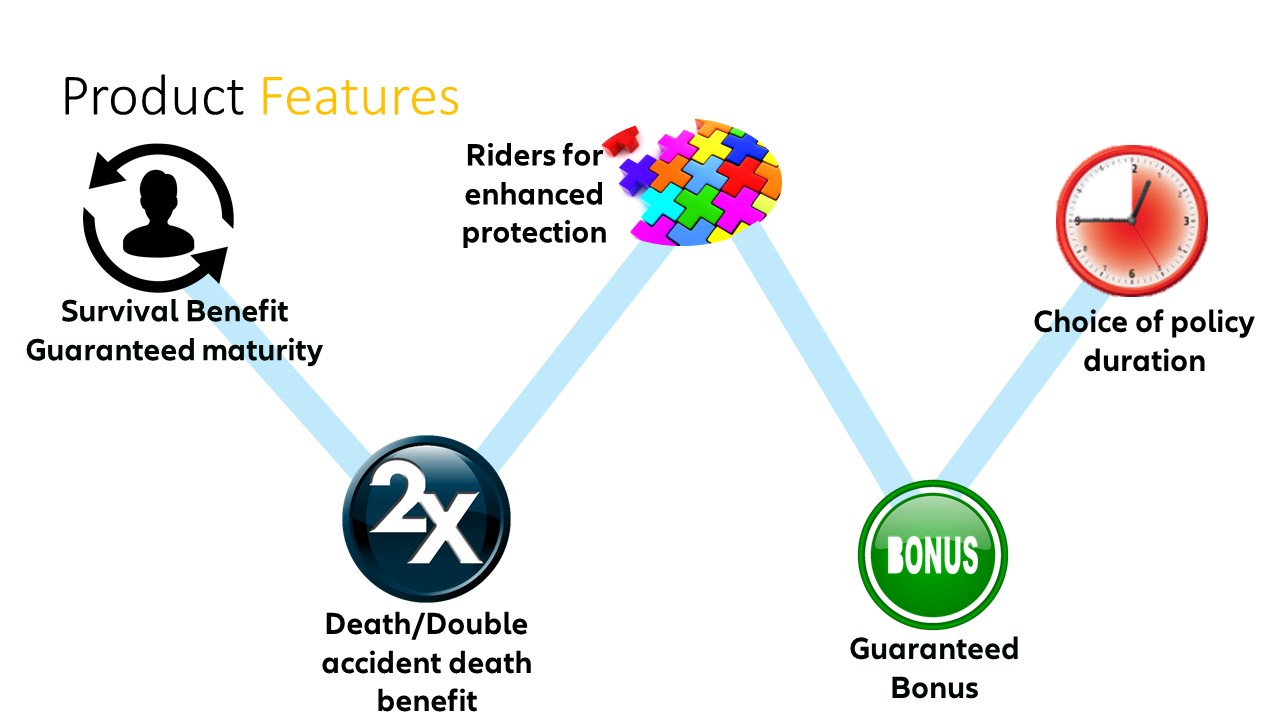

Finance
What Is A Participating Life Insurance Policy?
Published: October 16, 2023
Looking to secure your financial future? Learn all about participating life insurance policies and how they can benefit your finances.
(Many of the links in this article redirect to a specific reviewed product. Your purchase of these products through affiliate links helps to generate commission for LiveWell, at no extra cost. Learn more)
Table of Contents
Introduction
Life insurance is a crucial financial tool that provides a safety net for your loved ones in the event of your untimely demise. It is designed to provide financial support to cover various expenses such as mortgage payments, education costs, and day-to-day living expenses. While there are different types of life insurance policies available, one option that offers additional benefits is a participating life insurance policy.
A participating life insurance policy is a type of permanent life insurance that not only provides a death benefit but also allows policyholders to share in the profits of the insurance company. These profits, known as “surplus,” are distributed to policyholders in the form of dividends or participating payouts. These dividends can be received as cash, applied to reduce premiums, purchase additional coverage, or deposited into an interest-bearing account.
Participating life insurance policies are typically offered by mutual insurance companies, where policyholders are also considered owners of the company. This means that policyholders have the opportunity to participate in the company’s financial success. While the dividends are not guaranteed, participating life insurance policies tend to have a history of generating consistent dividends over time.
The purpose of this article is to provide an in-depth understanding of participating life insurance policies. We will explore how they work, the benefits they offer, the potential drawbacks, and the factors to consider when choosing a participating life insurance policy.
If you are considering purchasing life insurance, it is important to evaluate the various options available to determine which policy best aligns with your financial goals and needs. Understanding the features and benefits of participating life insurance policies can help you make an informed decision to protect your family’s financial future.
Definition of a Participating Life Insurance Policy
A participating life insurance policy is a type of permanent life insurance that offers both a death benefit and the potential to earn dividends or participating payouts. It is also known as a “par policy” or a “with-profit policy.” Unlike term life insurance which provides coverage for a specific period of time, participating life insurance provides coverage for the entire lifetime of the insured.
With a participating life insurance policy, policyholders have the opportunity to participate in the financial success of the insurance company. When the insurance company generates profits, a portion of those profits, known as “surplus,” is distributed to policyholders in the form of dividends. These dividends are not guaranteed and are influenced by the company’s financial performance, investment returns, and claims experience.
The dividends from a participating life insurance policy can be used in different ways. Policyholders can choose to receive the dividends as cash, which can be used for any purpose, such as paying bills or investing in other financial vehicles. Alternatively, the dividends can be applied to reduce the premium payments, lowering the out-of-pocket expenses for policyholders. Some policyholders choose to accumulate the dividends within the policy, where they earn interest and increase the policy’s cash value over time.
It’s important to note that dividends from a participating life insurance policy are not considered taxable income since they are a return of the policyholder’s premiums or a share of the company’s profits. However, any interest earned on the accumulated dividends within the policy may be subject to taxation.
Participating life insurance policies are typically offered by mutual insurance companies. Mutual insurance companies are owned by the policyholders, meaning that policyholders have a say in the company’s operations and can participate in the company’s profits. This ownership structure differentiates participating life insurance policies from other forms of life insurance, such as term life insurance or universal life insurance.
In summary, a participating life insurance policy is a permanent life insurance policy that not only provides a death benefit but also allows policyholders to share in the profits of the insurance company through dividends or participating payouts. It offers a unique combination of financial protection and potential for additional returns, providing policyholders with added financial flexibility and benefits.
How Participating Life Insurance Works
Participating life insurance works by combining the features of permanent life insurance coverage with the potential to earn dividends or participating payouts. Here is a breakdown of how participating life insurance works:
- Premium Payments: Policyholders pay regular premium payments to maintain their participating life insurance coverage. These premiums are typically higher than those of term life insurance policies but remain level throughout the policy’s duration.
- Death Benefit: If the policyholder passes away while the policy is active, the insurance company will pay a death benefit to the designated beneficiaries. The death benefit is typically tax-free and can be used to cover funeral expenses, outstanding debts, and provide financial support to the beneficiaries.
- Participation in Profits: As a policyholder of a participating life insurance policy, you have the potential to receive dividends or participating payouts from the insurance company. These dividends are paid out when the insurance company generates profits, based on factors such as investment returns, claims experience, and the overall financial performance of the company.
- Dividend Options: The dividends can be received in various ways. Policyholders may choose to receive the dividends as cash, allowing them to use the funds as they wish. Alternatively, they can opt to have the dividends applied towards reducing future premium payments, effectively lowering their out-of-pocket expenses. Finally, policyholders can choose to have the dividends accumulate within the policy, where they earn interest and increase the policy’s cash value over time.
- Policy Cash Value: Participating life insurance policies have a cash value component that grows over time. The cash value represents the policy’s savings element and can be accessed by policyholders through policy loans or withdrawals, providing a source of financial flexibility if needed.
- Policy Participation: Participating life insurance policies are typically offered by mutual insurance companies. As a policyholder, you become a member of the company and have the opportunity to participate in the company’s voting and decision-making processes. You also have the potential to benefit from the financial success of the company in the form of dividends.
It’s essential to note that while participating life insurance policies provide the potential for dividends, these dividends are not guaranteed. The actual amount of dividends can vary from year to year based on the performance of the insurance company. It’s advisable to review the company’s historical dividend payments and financial stability before purchasing a participating life insurance policy.
Overall, participating life insurance offers a unique combination of permanent life insurance coverage and the potential for additional returns through dividends. It provides policyholders with the opportunity to share in the profits of the insurance company while maintaining the financial protection and flexibility that life insurance provides.
Benefits of a Participating Life Insurance Policy
Participating life insurance policies offer several benefits that make them an attractive option for individuals seeking long-term financial protection and potential growth. Here are some of the key benefits of a participating life insurance policy:
- Death Benefit Protection: Like other types of life insurance policies, participating life insurance provides a death benefit to your beneficiaries upon your passing. This benefit can help cover funeral expenses, outstanding debts, and provide financial support to your loved ones, ensuring their financial stability in your absence.
- Potential for Dividends: One of the primary advantages of a participating life insurance policy is the opportunity to receive dividends. Participating policies give policyholders a chance to share in the insurance company’s profits based on factors such as investment returns and claims experience. The dividends can provide additional income or be reinvested to increase the policy’s cash value over time.
- Growth of Cash Value: Participating life insurance policies have a cash value component that grows over time. As premiums are paid and dividends are credited, the policy’s cash value increases. This cash value can be accessed through policy loans or withdrawals, providing a source of funds for various needs such as emergencies or supplemental retirement income.
- Tax Advantages: Participating life insurance policies offer certain tax advantages. Generally, the death benefit is paid out tax-free to beneficiaries. Additionally, the dividends earned within the policy are typically considered a return of premium or a share of the company’s profits and are not subject to income tax. However, it’s important to consult with a tax professional for specific tax advice based on your circumstances.
- Financial Flexibility: Participating life insurance policies provide policyholders with financial flexibility. As the policy’s cash value grows, it can be used for various purposes, including paying premiums, supplementing retirement income, funding education expenses, or addressing unexpected financial needs. The ability to access the cash value provides policyholders with a valuable asset to manage financial challenges throughout their lives.
- Participation in Company Ownership: Participating life insurance policies are typically offered by mutual insurance companies. As a policyholder, you become a member of the company and have the opportunity to participate in the company’s decision-making processes. This ownership structure allows policyholders to have a say in the company’s operations and potentially influence the financial success of the company.
It’s important to note that the benefits and features of participating life insurance can vary depending on the specific policy and insurance company. Before purchasing a participating life insurance policy, it’s crucial to thoroughly research and understand the terms, conditions, and potential risks involved. Comparing policies from different insurance providers can help you find the best fit for your financial goals and needs.
Overall, participating life insurance policies provide policyholders with not only essential death benefit protection but also the potential for dividends, cash value growth, and financial flexibility. These benefits make participating life insurance an attractive option for individuals looking for long-term stability and potential for additional growth within their life insurance policy.
Drawbacks of a Participating Life Insurance Policy
While participating life insurance policies offer various benefits, it’s essential to consider the potential drawbacks before making a decision. Understanding these drawbacks can help you make an informed choice about whether a participating life insurance policy is the right fit for your financial goals and needs. Here are some of the key drawbacks to consider:
- Higher Premiums: Participating life insurance policies generally have higher premiums compared to term life insurance policies. The higher premiums reflect the additional features and potential for dividends offered by participating policies. If your budget is tight or if you feel that you don’t need the potential cash value growth, the higher premiums may impact your ability to afford the policy.
- Dividend Uncertainty: The dividends from participating life insurance policies are not guaranteed. While insurance companies strive to provide consistent and predictable dividends, they can vary from year to year based on factors such as investment returns, claims experience, and overall company performance. If you are relying on the dividends as a source of income or growth, the uncertainty can pose a challenge to your financial planning.
- Low-interest Environment Impact: Participating life insurance policies rely on generating investment returns to fund the dividends and cash value growth. In a low-interest-rate environment, insurance companies may face challenges in generating the desired returns. This can result in lower or delayed dividend payments and slower cash value growth, impacting the potential benefits of the policy.
- Complexity: Participating life insurance policies can be more complex compared to other types of life insurance. Understanding the various components such as guaranteed cash values, dividends, policy loans, and surrender charges requires careful attention and financial literacy. It’s important to review and comprehend the policy’s terms and conditions to fully understand the potential benefits and risks involved.
- Opportunity Cost: Participating life insurance policies tie up your funds within the policy, limiting your ability to invest or allocate your money elsewhere. While the policy’s cash value can provide financial flexibility, the potential returns from other investment opportunities may outperform the growth within the policy.
- Long-term Commitment: Participating life insurance policies are designed for long-term financial protection. If you cancel the policy early, surrender charges may apply, which can significantly reduce the amount you receive. It’s crucial to consider your long-term financial goals and evaluate whether a participating life insurance policy aligns with your risk tolerance, liquidity needs, and future plans.
It’s important to carefully weigh the benefits and drawbacks of participating life insurance policies and assess how they align with your financial objectives. Consider consulting with a financial advisor or insurance professional who can provide personalized guidance based on your unique circumstances and goals.
While participating life insurance offers potential growth and additional benefits, it’s crucial to thoroughly understand the potential drawbacks to make an informed decision about whether this type of policy is the right fit for your financial strategy.
Factors to Consider When Choosing a Participating Life Insurance Policy
Choosing a participating life insurance policy is an important decision that requires careful consideration. To ensure that you select the right policy for your financial goals and needs, here are some key factors to consider:
- Financial Stability of the Insurance Company: It’s essential to evaluate the financial strength and stability of the insurance company offering the participating life insurance policy. Look for companies with strong credit ratings and a solid track record of financial performance. This information can help you assess the company’s ability to generate consistent dividends and meet its obligations to policyholders.
- Historical Dividend Payments: Review the company’s historical dividend payments to policyholders. Look for a track record of consistent and competitive dividend payouts over several years. This can give you an idea of the company’s commitment to sharing profits and providing value to policyholders.
- Policy Flexibility: Evaluate the flexibility of the participating life insurance policy. Consider factors such as the ability to adjust premium payments, the option to increase or decrease coverage, and the flexibility in accessing the cash value of the policy. Ensure that the policy aligns with your changing financial needs and future goals.
- Policy Expenses: Participating life insurance policies may have various fees and expenses associated with them. These can include policy administration fees, premium loadings, and expenses related to investment management. It’s important to understand and compare these costs among different insurance companies to ensure you are getting a competitive and transparent policy.
- Policy Surrender Value: Review the surrender value of the policy. The surrender value is the amount you will receive if you choose to cancel or surrender your policy before the end of the policy term. Understand any surrender charges or penalties that may apply and consider how these may affect your financial plan.
- Rider Options: Participating life insurance policies may offer additional riders or benefits that can be added to the base policy. Examples of common riders include disability riders, critical illness riders, and long-term care riders. Evaluate these options to determine if they align with your specific needs and provide added value to your policy.
- Policyholder Ownership: As mentioned earlier, participating life insurance policies are typically offered by mutual insurance companies where policyholders are considered owners of the company. Consider the importance of policyholder ownership to you and whether having a stake in the company’s operations and profits is a significant factor in your decision-making process.
It’s also advisable to consult with a licensed insurance professional or financial advisor who can provide guidance and help you navigate the various policy options available. They can assist you in evaluating your specific needs, comparing policies, and selecting the right participating life insurance policy for your financial situation.
By considering these factors and conducting thorough research, you can make an informed decision regarding a participating life insurance policy that aligns with your financial goals, risk tolerance, and long-term objectives.
Conclusion
Participating life insurance policies offer a unique combination of financial protection, potential growth, and the opportunity to share in the profits of the insurance company. These policies provide policyholders with the peace of mind that comes with a death benefit, as well as the potential for dividends and cash value growth over time.
While participating life insurance policies have several benefits, it’s essential to consider the potential drawbacks, such as higher premiums, dividend uncertainty, and the long-term commitment required. By carefully evaluating these factors, you can determine if a participating life insurance policy aligns with your financial goals, risk tolerance, and future plans.
When choosing a participating life insurance policy, it’s crucial to consider the financial stability of the insurance company, historical dividend payments, policy flexibility, expenses associated with the policy, surrender value, rider options, and policyholder ownership. Conducting thorough research and seeking guidance from a licensed insurance professional or financial advisor can help you make an informed decision based on your unique circumstances.
Remember that participating life insurance is a long-term commitment, and it’s important to periodically review and reassess your policy to ensure it continues to meet your needs as your financial situation evolves.
In conclusion, participating life insurance offers a valuable combination of protection, potential growth, and financial flexibility. By carefully considering the benefits, drawbacks, and relevant factors when choosing a policy, you can select the right participating life insurance policy to provide security and potential for long-term financial success.














